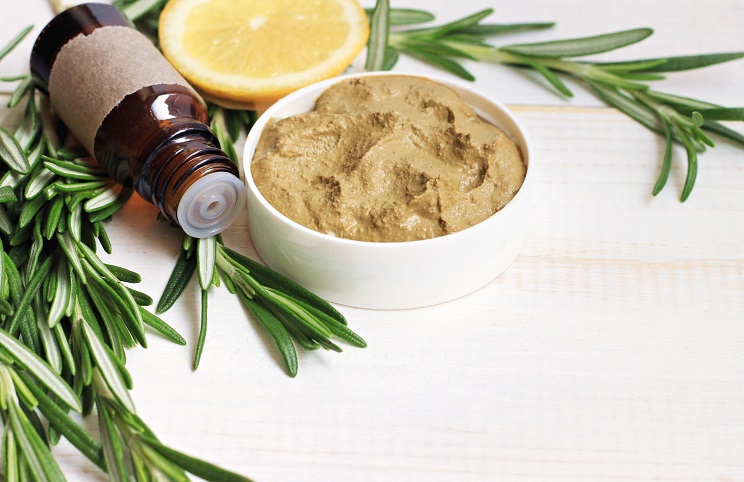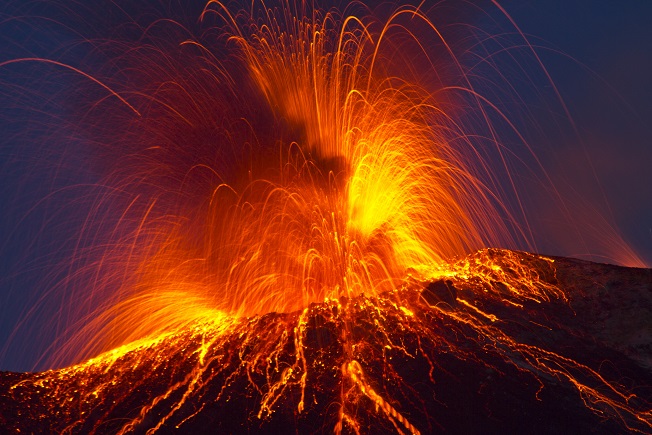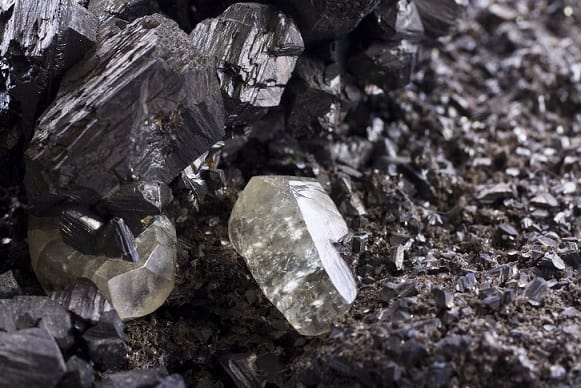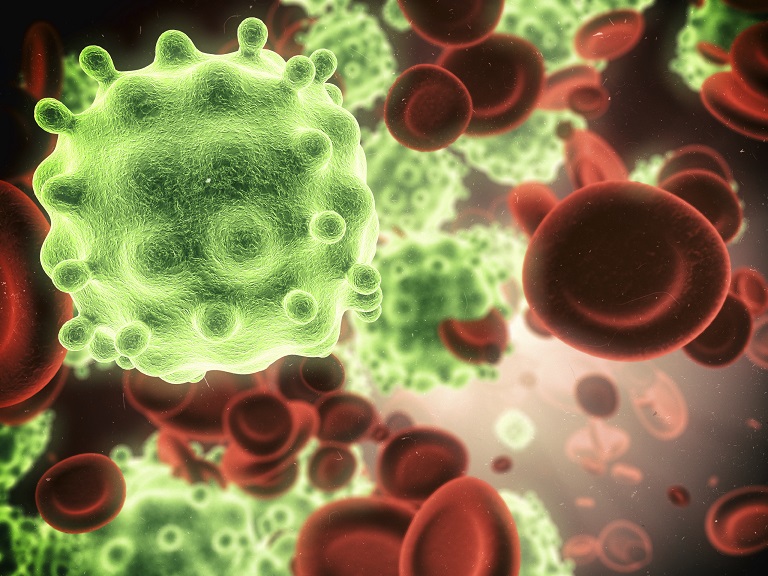Bentonite clay, also known as montmorillonite or the “mineral with 1000 uses” is an ancient remedy which is mined from altered volcanic ash beds, the hardened layers of countless volcanic eruptions over millions of years.
The bentonite is born during the rapid cooling of magma after its leaves the Earth’s crust, and is blasted high into the atmosphere. There, it solidifies and morphs into solids and glassy particles. It rains back to Earth, and the base of bentonite is born, featuring 75 different trace minerals.
Bentonite clay was originally named after Fort Benton in Wyoming, where the world’s largest bentonite mine was discovered in 1898. Since then, bentonite has been used for oil drilling, well-filling and even removing the cloudiness in wine making, but it’s also become wildly popular in skincare as a grey-green face mask, particularly among women. Various cleanser brands include it for reducing oily skin, including Clearasil. The main form used as a face mask is sodium bentonite, the other two forms being calcium and potassium bentonite.
Does this ancient mineral deposit from deep in the Earth’s fiery crust have any acne powers, or is it all pure hype?
The bentonite clay theories
The predominant theory about bentonite clay’s acne powers relates to its detoxification properties. It’s said that whenever bentonite clay comes into contact with any fluid, its electric components charge.
Specifically, it gains a strong negative charge, and supposedly, all toxins have strong positive charges. Hence, they are attracted to the clay like a magnet. The molecular bonds of the toxin are broken down, releasing the minerals within for the body to use.
One undeniable fact is that bentonite clay swells up massively (up to 20 times its normal size) when exposed to water, as it’s so porous. Bentonite is used in construction to seal old wells and ponds for that reason. The theory states that through magnetic attraction, toxins are sucked into this porous sponge through “adsorption”, and become bound, trapped and doomed.
Read Annihilate Your Acne – get the ultimate diet for clear and glowing skin!
The relevance for acne? You might have heard that environmental toxins are everywhere nowadays, whether it’s triclosan in toothpaste or heavy metals in tuna. For example, 99% of all Americans now have plastic-based chemicals called phthalates in their bodies.
The theory is that by using the forces of electrical attraction, bentonite clay can suck these toxins directly out of the skin, removing their evil influence, and making for a highly effective topical treatment.
Meanwhile, the second main theory is that bentonite clay is highly alkaline, and can therefore sooth inflammation and acidity.
The bentonite clay reality
Sounds fantastic right? Unfortunately, there’s a problem with the evidence – it doesn’t exist. Heavy metals and chemicals are an insidious problem for acne, but their deadliest actions happen inside the body, whether it’s depleting the antioxidant glutathione, or spiking inflammation.
Toxins trapped in the skin can pile on local inflammation, but the chances of getting gloriously clear skin just by “adsorbing” BPA using bentonite clay are extremely slim.
The detoxification theory does have some truth to it – bentonite clay is proven to absorb and detoxify aflatoxins in the digestive tract (study, study), a mould-borne mycotoxin found on poor quality peanuts. But there’s no chance that the negative charge will extract virtually every known toxin like the internet hype suggests.
Read the eBook: learn why common vegetable oils are an acne nightmare
All heavy metals are positively charged, like mercury and aluminium, but for chemicals, the rule isn’t uniform. Phthalates from plastic have a negative charge, and they’re the main acne-causing chemical of make-up, applied every day.
The heavy metal aluminium is also found in make-up, so this time bentonite clay may succeed. But mercury and arsenic are found in tuna and fruit juice respectively. Most of this intake won’t be concentrated in the skin.
Is bentonite clay soothing and alkaline?
The alkaline theory is another faulty one. A PH of 8-9.7, the natural range of bentonite clay, is a disaster for your skin. Human skin has a naturally acidic PH of 4-4.5, increasing slightly as you age into adulthood due to a decreased need for a firewall against viruses.
On the internet, you may have encountered alternative health people insisting fiercely that everything acidic is evil. There’s a whole acid-alkaline theory of health where nearly every ailment whether it’s cancer, diabetes or Alzheimer’s, is caused by excessive acid in the body.
Too much acidity can wreak your teeth and fizzle away your joints, but your skin cells are one place when you need healthy acidity. Applying bentonite clay would result in dryness, irritation, and the biggest symptom associated with alkaline treatments like baking soda – severe damage to the skin barrier.
Is bentonite clay the greatest weapon against oily skin ever?
Next we have a correct theory, but in the wrong way – that bentonite clay is excellent for oily skin.
We return to bentonite’s large absorption capacity. When mixed with water and left to expand, bentonite clay can literally suck excess sebum off of your face, and potentially right out of the pores.
Unlike the toxin theory, this one has evidence going back 30 years. In 1982, scientists wanted to analyse rates of normal sebum production after excess sebum had been removed. They applied an oil-reducing substance to 2.5cm squared areas of 3 test subjects’ faces for 24 hours, but what was this substance?
Important article – the top 6 vitamins and minerals for clearing acne
Maybe you guessed it – bentonite clay. Clearly, scientists already knew that bentonite clay was fantastic for oily skin back in the 1980s. Bentonite clay wasn’t specifically being examined; it was simply a tool they were using for analysis.
A 1985 study on children performed the exact same experiment. This ancient volcanic rock formation from the earth’s crust clearly reduces sebum with the utmost reliability.
The problem is that it’s too effective. Check out these testimonials from random acne patients:
- “I tried it as a face mask and all it did was dry me out”.
- “Bentonite clay dries my face out to the point that it hurts”.
- “Bentonite is extremely drying, more than any topical treatment I have used in my lifetime”.
- “Bentonite sticks to my face really tightly and trying to wash this stuff off is hard”.
There’s positive testimonials as well, with one reporting “amazing results” within weeks, but the story of skin becoming as dry as sandpaper is everywhere. Not only will that that steal your skin’s aesthetics by creating white flaky patches, but in the long term, your skin could get more oily.
Why? Sebum is not some evolutionary leftover which simply exists to clog pores – it’s a lubrication agent, and nutrient delivery service. If your skin has dried up far beyond what’s necessary, then your sebaceous glands go into overdrive to replenish its lost supplies.
Is bentonite clay rich in skin-clearing minerals?
Another misleading story is the treasure trove of 75 minerals from the earth’s mantle which everyone gets hyped up about. The facts are true, and in descending order, the most abundant minerals are silica, aluminium silica, sodium chloride, potassium, and calcium. There’s tons of rare ones like scandium, cesium, and renium.
But similarly to the toxins theory, minerals are far more effective against acne when inside the body. Zinc, for instance, constrains your entire immune system. Magnesium and selenium are used to manufacture glutathione and will have minimal benefit when applied to the face.
For instance, there’s a topical cream called selenium sulphide which gets rave reviews, but it’s actually the sulphide portion which helps acne, by massacring p.acnes bacteria. Popular topical zinc creams have been compared to placebos in studies and found to be no more effective (1985 study). Yet zinc is an amazing internal supplement that can slash acne counts by 49.8%.
Why vitamin C is the acne nutrient you cannot ignore
These minerals will have minor indirect benefits, but you’d do better to dunk your head in a giant vat of pomegranate juice, easily, because vitamins and antioxidants are the real topical heroes. This is down to their antioxidant functioning; your epidermis has armours of both vitamin E and vitamin A to protect against sunlight, air pollution and other free radical sources. Even minor plant antioxidants can add to this armour, such as resveratrol in grapes or anthocyanins in blueberries.
Bentonite clay has decent antibacterial powers
However, bentonite clay isn’t beyond redemption – it has at least one interesting power in the realm of skincare.
This 2007 study from Arizona State University tested forms of bentonite clay against several bacterial species, including s.aureus, e.coli, m.marianum, and salmonella. The bacterial cultures without added clay grew over 1000 times faster, and they stated that the bentonite clay “exhibits bactericidal activity”. P.acnes bacteria wasn’t included, but this is promising nevertheless.
By 2009, research had progressed enough to write a massive review with loads of interesting facts. They began by claiming that “some bentonites offer distinct antibacterial properties”. Then they detailed a study on a green-coloured French bentonite called a “healing clay”, which eradicated a bacterial skin infection called a Buruli ulcer.
Then things got real. Clays can either be hydrophilic, where they attract water, or organophillic, where they attract organic substances. The organophillic clays apparently killed bacteria by attracting the cell towards the clay with such extreme force that the cell membrane was torn apart, causing a catastrophic leakage of cytoplasm and then death.
Bentonite clay can thus wipe out bacteria physically, although there was no sign of another physical method examined – when clay crystals orient around the bacteria and suffocate it.
Chemical antibacterial properties were also observed, theorised to be from 1) poisoning the bacteria, or 2) depriving it of nutrients. Interestingly, water seemed to activate the antibacterial properties, as applying dry clay to E. coli achieved zero inhibition.
In short, there’s a moderate chance that bentonite clay will wipe out p.acnes bacteria and the acne-causing inflammation it triggers.
Bentonite clearly has some value, because it shows up in the history books frequently. There’s reports of bentonite clay being found in paint caves from the Homo erectus era 1.9 million to 70,000 years ago, and in old Neanderthal sites, said to have been used for treating wounds. The Pharaoh’s physicians in Ancient Egypt used bentonite clay as an anti-inflammatory agent.
Important article – the top 7 natural topical treatments for acne
That said, some bentonite clays achieved nothing; they were merely hydrophilic, attracting water. Others actually increased bacterial growth, and the dangers of drying out your skin still stand. It’s difficult to predict what each individual clay will do, because according to the scientists, bentonites that led to “growth enhancement” were mineralogically similar to the others.
Conclusion
Whether it comes from the Earth’s fiery core or not, this ancient ash deposit is a highly overrated acne treatment.
The antibacterial benefits of bentonite clay are decent, particularly its cool power to suck bacteria in so fast that they physically smash. But they’re still too weak to counteract the dangers of alkalinity and extreme dryness.
Plus, the mask usually dries and glues to your face way too efficiently. Removing the clay cleanly is almost impossible, leading to irritation and worse looking skin in the first place. There’s also the sheer inconvenience – who wants to walk around with a grey or green face mask on all day?
Raw honey is far simpler, as you can apply a tiny amount in five seconds flat, and walk the streets without looking like an alien, as long as it’s not an extremely dark coloured variety. Grapeseed oil can be used on your entire face without anyone noticing.
NEXT: learn the root causes of acne, clear your skin permanently
Thanks for reading!





Hello,
Thanks for the article..just wondering whether other clays are good for acne, eg. French clay, rhassoul clay? Also, does activated charcoal help draw toxins out of the skin?